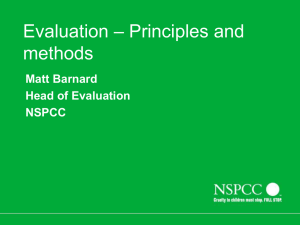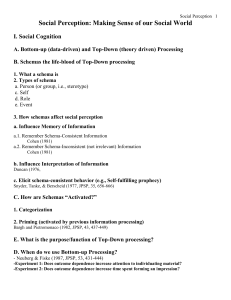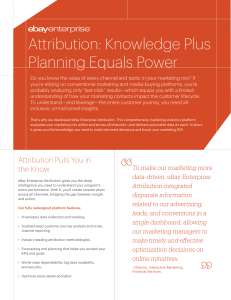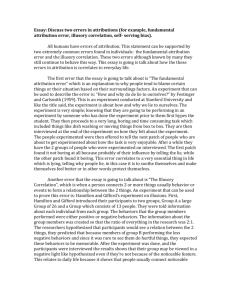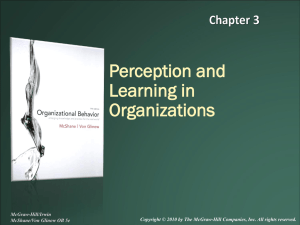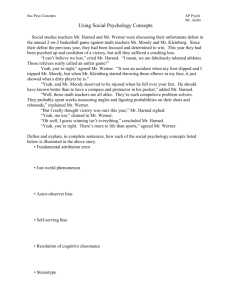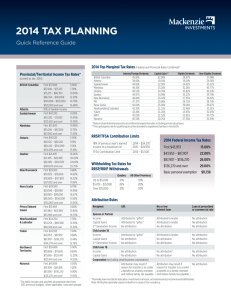Quiz: Self-Concept, Social Perception, Attribution Theory
advertisement
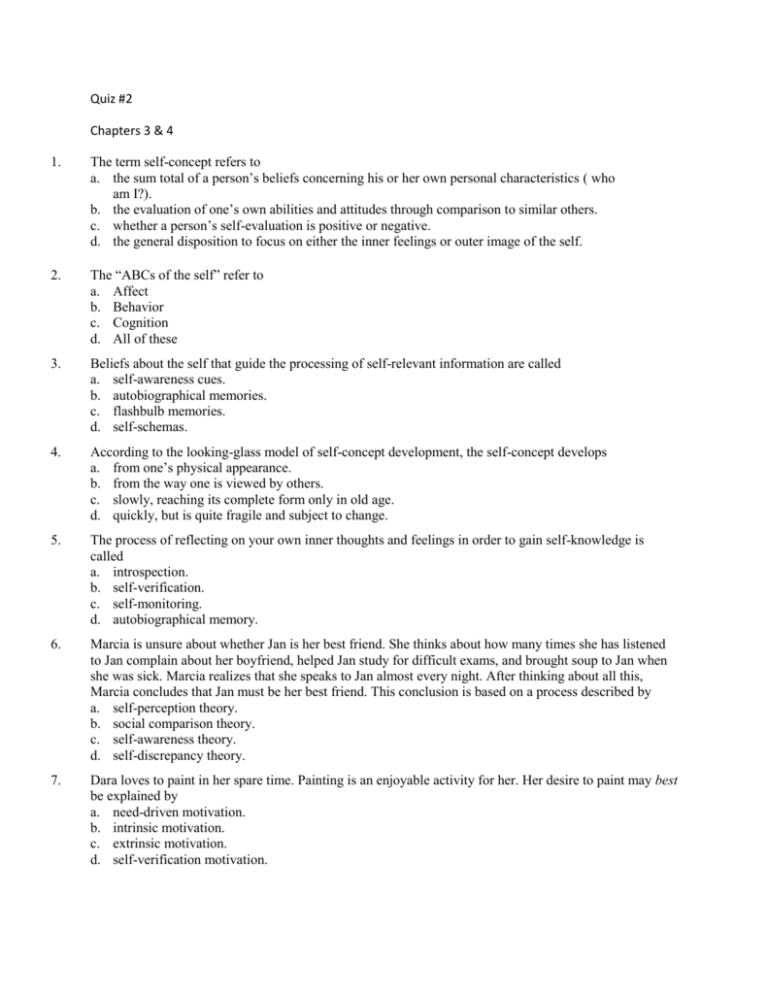
Quiz #2 Chapters 3 & 4 1. The term self-concept refers to a. the sum total of a person’s beliefs concerning his or her own personal characteristics ( who am I?). b. the evaluation of one’s own abilities and attitudes through comparison to similar others. c. whether a person’s self-evaluation is positive or negative. d. the general disposition to focus on either the inner feelings or outer image of the self. 2. The “ABCs of the self” refer to a. Affect b. Behavior c. Cognition d. All of these 3. Beliefs about the self that guide the processing of self-relevant information are called a. self-awareness cues. b. autobiographical memories. c. flashbulb memories. d. self-schemas. 4. According to the looking-glass model of self-concept development, the self-concept develops a. from one’s physical appearance. b. from the way one is viewed by others. c. slowly, reaching its complete form only in old age. d. quickly, but is quite fragile and subject to change. 5. The process of reflecting on your own inner thoughts and feelings in order to gain self-knowledge is called a. introspection. b. self-verification. c. self-monitoring. d. autobiographical memory. 6. Marcia is unsure about whether Jan is her best friend. She thinks about how many times she has listened to Jan complain about her boyfriend, helped Jan study for difficult exams, and brought soup to Jan when she was sick. Marcia realizes that she speaks to Jan almost every night. After thinking about all this, Marcia concludes that Jan must be her best friend. This conclusion is based on a process described by a. self-perception theory. b. social comparison theory. c. self-awareness theory. d. self-discrepancy theory. 7. Dara loves to paint in her spare time. Painting is an enjoyable activity for her. Her desire to paint may best be explained by a. need-driven motivation. b. intrinsic motivation. c. extrinsic motivation. d. self-verification motivation. 8. Behavior that communicates a person’s feelings without words is called a. scripted behavior. b. fine-unit behavior. c. perceptually salient behavior. d. nonverbal behavior. 9. According to your text, deception is most likely to be detected by attending to which channel of communication? a. Spoken words b. Body posture c. Voice pitch d. Facial expression 10. Charice’s boyfriend is late for their date. Charice believes this is because he is thoughtless and selfcentered. Charice is making a(n) a. personal or internal dispositional attribution. b. situational attribution. c. external attribution. d. counterfactual attribution. 11. . Jorge watches his friend Nina interacting with others and makes a situational attribution for her behavior. Jorge believes that a. Nina’s behavior is best explained by the circumstances surrounding the encounter. b. Nina’s way of relating to people stems from particular characteristics of her personality. c. Nina is not acting the way other people would act in the same situation. d. Nina’s actions are not consistent with the social norms governing that particular situation. 12. Estimates of the probability that an event will happen based on the ease with which one can recall previous instances of this event reflect the a. base-rate fallacy. b. fundamental attribution error. c. two-step attribution process. d. availability heuristic. 13. Sophia voted for Barack Obama in the 2008 U.S. Presidential election. She believes that approximately 90 percent of college students also voted for Obama, when in reality that number is much lower. Sophia’s overestimation is consistent with a. the false-consensus effect. b. the confirmation bias. c. the self-fulfilling prophecy. d. the representativeness heuristic.


